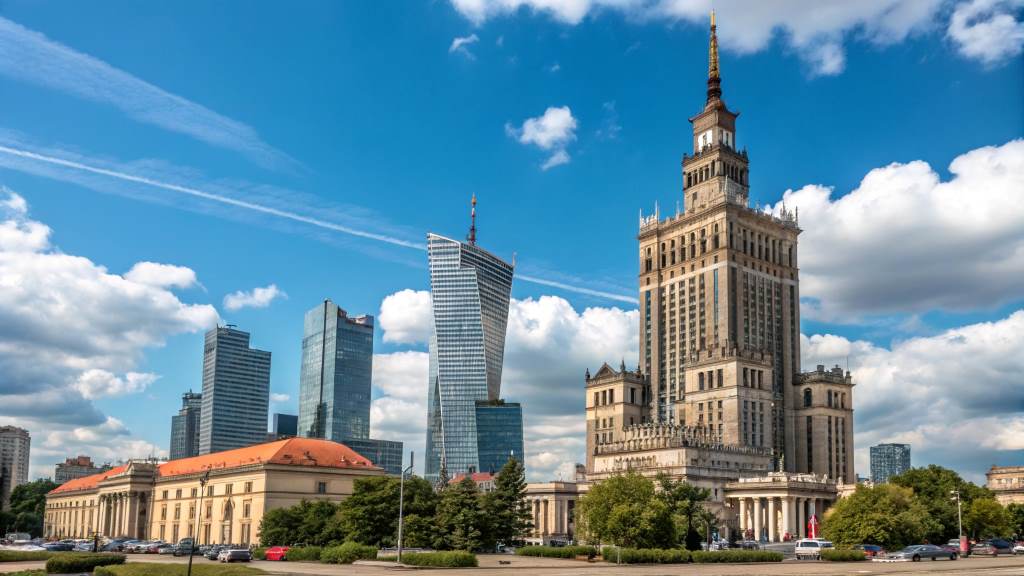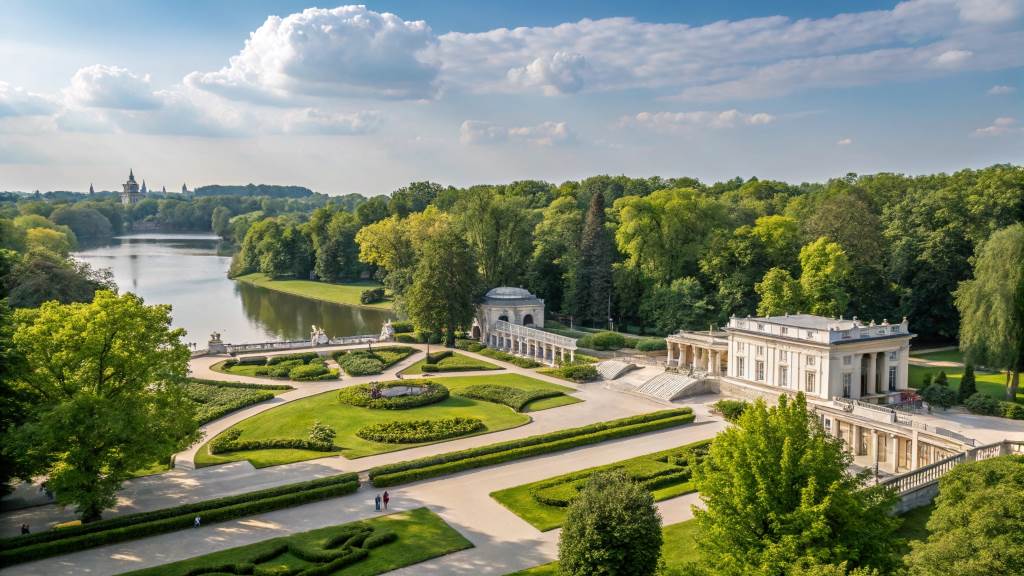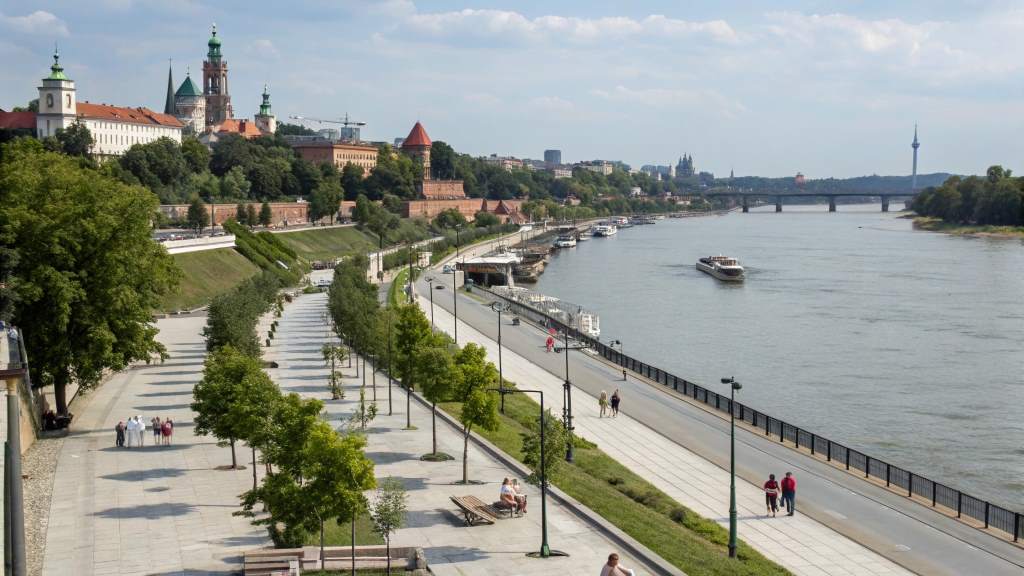
Warsaw, the vibrant capital of Poland, is a city where history and modernity coexist harmoniously. It has risen from the ashes of World War II to become a cultural and economic hub, boasting stunning architecture, lively nightlife, and deep-rooted history. Whether you are a history buff, an art lover, or a foodie, Warsaw has something for everyone. In this guide, we will explore the must-see attractions, hidden gems, and cultural experiences that make Warsaw a fascinating travel destination.
Old Town: The Heart of Warsaw
A UNESCO World Heritage Site, Warsaw’s Old Town is the city’s beating heart. Rebuilt from ruins after WWII, it is a testament to Polish resilience. Walking through its cobbled streets, you’ll find colorful townhouses, charming cafés, and historical monuments. Similarly, What to See in Lyon includes a mix of historical and modern attractions, from the UNESCO-listed Old Town (Vieux Lyon) to the stunning Basilica of Notre-Dame de Fourvière, offering breathtaking views of the city.
Must-See in Old Town:
- Royal Castle – Once the residence of Polish monarchs, this stunning baroque castle now houses a museum.
- Sigismund’s Column – A tribute to King Sigismund III Vasa, the ruler who moved Poland’s capital from Kraków to Warsaw.
- Market Square – A lively square with street artists, local eateries, and souvenir shops.
- St. John’s Archcathedral – A gothic masterpiece with royal tombs and a rich history.
Lazienki Park: A Royal Retreat
Lazienki Park is the largest park in Warsaw, offering a peaceful escape from the city’s hustle. Designed in the 18th century, it is home to the stunning Palace on the Isle, a summer residence of King Stanisław August.
Things to Do in Lazienki Park:
- Attend a Chopin concert at the Chopin Monument.
- Take a boat ride across the scenic lake.
- Visit the Old Orangery and admire its classical sculptures.
- Watch peacocks roam around the gardens.
Warsaw Uprising Museum: A Story of Courage
This museum is dedicated to the heroic Warsaw Uprising of 1944. Through interactive exhibits, personal stories, and historical footage, visitors gain a deep understanding of Poland’s fight for freedom.
Highlights of the Museum:
- A life-sized replica of a WWII sewer system used by insurgents.
- The Wall of Remembrance, listing the names of fallen soldiers.
- An immersive 3D film showcasing Warsaw’s destruction.
Palace of Culture and Science: A Controversial Landmark
A gift from the Soviet Union, the Palace of Culture and Science is Warsaw’s tallest building and a symbol of its communist past. While its Stalinist architecture divides opinions, the observation deck offers breathtaking panoramic views of the city.
Things to Do Here:
- Take an elevator ride to the 30th floor for a stunning city view.
- Visit museums and theaters inside the building.
- Attend an exhibition or film festival hosted here.
Wilanów Palace: The Polish Versailles
This baroque masterpiece was once the royal residence of King John III Sobieski. Today, it serves as a museum showcasing Poland’s royal history.
Why Visit Wilanów Palace?
- Marvel at its opulent interiors and grand gardens.
- Explore the Museum of King John III.
- Attend the Royal Garden of Light, a spectacular evening event in winter.
POLIN Museum: The History of Polish Jews
One of the most important museums in Warsaw, POLIN Museum offers an in-depth look at the 1,000-year history of Jews in Poland.
Key Exhibits:
- The Holocaust Memorial, detailing the tragic fate of Warsaw’s Jewish community.
- Interactive displays on Jewish culture and traditions.
- A beautifully reconstructed 17th-century synagogue.
Praga District: Warsaw’s Hipster Haven
Located on the east side of the Vistula River, Praga is known for its artistic vibe, bohemian cafés, and vibrant street art.
Best Spots in Praga:
- Neon Museum, showcasing vintage neon signs from the communist era.
- Soho Factory, a creative hub with art galleries and indie boutiques.
- Ząbkowska Street, the heart of Praga’s nightlife.
Vistula Boulevards: A Riverside Escape
The Vistula Riverfront is a favorite hangout for both locals and tourists. Whether you prefer a relaxing stroll, an outdoor concert, or a sunset cruise, this area has plenty to offer.
What to Do Along the Vistula:
- Grab a drink at a floating bar.
- Rent a bike or scooter and explore the scenic trails.
- Watch fireworks and live performances during summer.
Food in Warsaw: What to Eat and Where
Polish cuisine is a must-try in Warsaw. From traditional pierogi to modern fusion dishes, the city is a food lover’s paradise. Explore when is the best time for traveling in Australia.
Must-Try Dishes:
- Pierogi – Polish dumplings with various fillings.
- Żurek – A sour rye soup with sausage and egg.
- Bigos – A hearty stew made with sauerkraut and meat.
- Pączki – Polish doughnuts filled with rose jam.
Best Restaurants and Food Markets:
- Zapiecek – Famous for traditional pierogi.
- Hala Koszyki – A trendy food hall with local and international cuisine.
- Bar Prasowy – A classic milk bar serving budget-friendly Polish meals.
Nightlife in Warsaw: Where to Go After Dark
Warsaw’s nightlife is diverse, with everything from rooftop bars to underground clubs.
Top Nightlife Spots:
- Pawilony – A collection of tiny bars near Nowy Świat Street.
- Level 27 – A rooftop club with panoramic city views.
- Hybrydy Club – One of Warsaw’s oldest and most famous nightclubs.
Shopping in Warsaw: Best Places to Buy Souvenirs
Looking for the perfect memento from your trip? Warsaw has plenty of unique shopping spots.
Where to Shop:
- Krakowskie Przedmieście – Home to luxury boutiques and souvenir shops.
- Cepelia – Best place to buy traditional Polish handicrafts.
- Hala Mirowska – A local market for fresh produce and regional products.
Day Trips from Warsaw
If you have extra time, consider venturing outside the city for a day trip.
Best Day Trips:
- Żelazowa Wola – Birthplace of Fryderyk Chopin.
- Kampinos National Park – A perfect spot for hiking and wildlife spotting.
- Treblinka – A sobering visit to a former Nazi extermination camp.
FAQs
What is the best time to visit Warsaw?
Spring (April-June) and autumn (September-October) offer the best weather and fewer crowds.
Is Warsaw an expensive city to visit?
Warsaw is affordable compared to other European capitals. Budget travelers can find cheap eats and accommodations easily.
How do I get around Warsaw?
Public transport, including trams, buses, and metro, is efficient and inexpensive. Taxis and ride-sharing apps are also widely available.
Do people in Warsaw speak English?
Yes, most younger locals and those in tourist areas speak English.
Is Warsaw safe for tourists?
Warsaw is generally safe, but as with any major city, it’s best to stay alert, especially in crowded areas.
Conclusion
Warsaw is a city of contrasts, where the past meets the future, and tradition blends with modernity. Whether you are exploring its historic streets, indulging in Polish cuisine, or enjoying its vibrant nightlife, the city offers an unforgettable experience. With so much to see and do, Warsaw is a must-visit destination in Europe.








